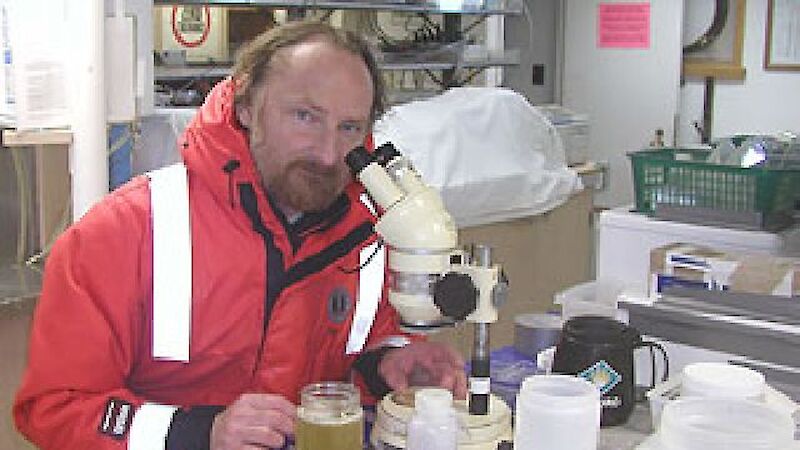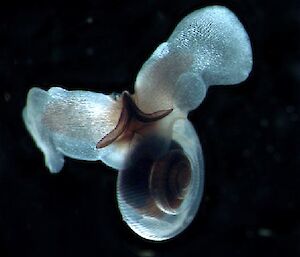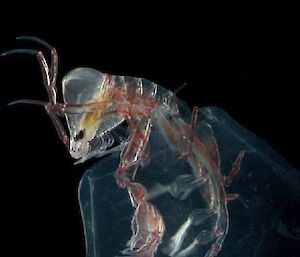They look more like aliens than earth-forms, but according to Associate Professor Russ Hopcroft, the thousands of microscopic marine animals that make up the ‘zooplankton’ in our oceans, are a critical part of the marine ecosystem, a sensitive indicator of climate change, and a great photographic subject.
Russ is visiting the Australian Antarctic Division as part of a year-long sabbatical from the University of Alaska in Fairbanks, and to strengthen ties with Australian Antarctic researchers involved in the Census of Antarctic Marine Life — a major Australian-led project of the International Polar Year (2007–08), which aims to determine the biodiversity, abundance and distribution of marine species around Antarctica.
Russ’s area of expertise is zooplankton ecology; a profession which has seen him cruising the North Pacific Ocean, Bering Sea, Arctic Ocean, Sargasso Sea and the Caribbean, among others, for samples of his tiny subjects. Many of the organisms Russ studies in the Arctic are also found around the Antarctic, or are closely related, but there are others he is yet to meet.
'I’m really hoping to get familiar with the animals here and to do some photography,' he says.
Russ started taking photographs of zooplankton four years ago, because of a lack of good quality, publicly accessible photos that showcased the animals’ both bizarre and beautiful characteristics.
'It’s really hard to get students interested in working with dead, pickled animals that have no colour, behaviour or movement and that are often twisted into unnatural poses,' he reflects.
He has since amassed a portfolio of thousands — many of which have appeared in journals, on web sites and in public relations material. All his photos are taken under a light microscope using live animals, which range in size from millimetres to about three centimetres.
'What’s really surprised me is that I've received more public interest and recognition of my work from my photographs, than from my science,' Russ says.
'The photos have really added value to the work I do and help educate people about the importance of these organisms, and a part of the ecosystem that people know so little about.'
Snail-like ‘pteropods’ are one group of animals Russ has become good at identifying through his photography. They are also one species more vulnerable to ocean acidification, which is occurring as a consequence of climate change.
Pteropods make shells out of calcium carbonate. However, their ability to form these shells correctly is affected as increasing amounts of atmospheric carbon dioxide dissolves in the ocean, making it more acidic and changing the chemical form of the calcium carbonate available. As zooplankton and other planktonic (drifting) organisms, such as algae, form the base of the food chain, changes in the structure of the planktonic ecosystem will have impacts all the way up the food chain to the fish, penguins, seals and whales.
'It is critical we study the ecosystem over the longer term, to see how climate change is impacting on the zooplankton and other planktonic organisms,' Russ says.
Russ is now six months through his sabbatical, having spent the past six months at the Australian Institute of Marine Science in Townsville. He and his young family have enjoyed meeting some of Australia’s more charismatic fauna, including wallabies, echidnas, snakes and parrots — quite a change from the moose, bears, Arctic foxes and beavers of his home town, and the alien-like microfauna that consume his working hours.
Wendy Pyper



